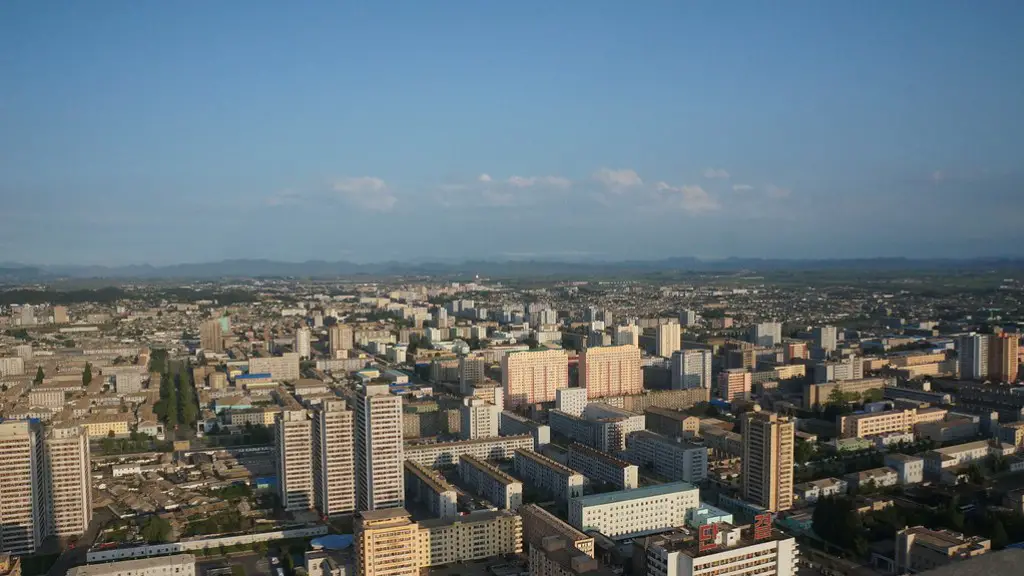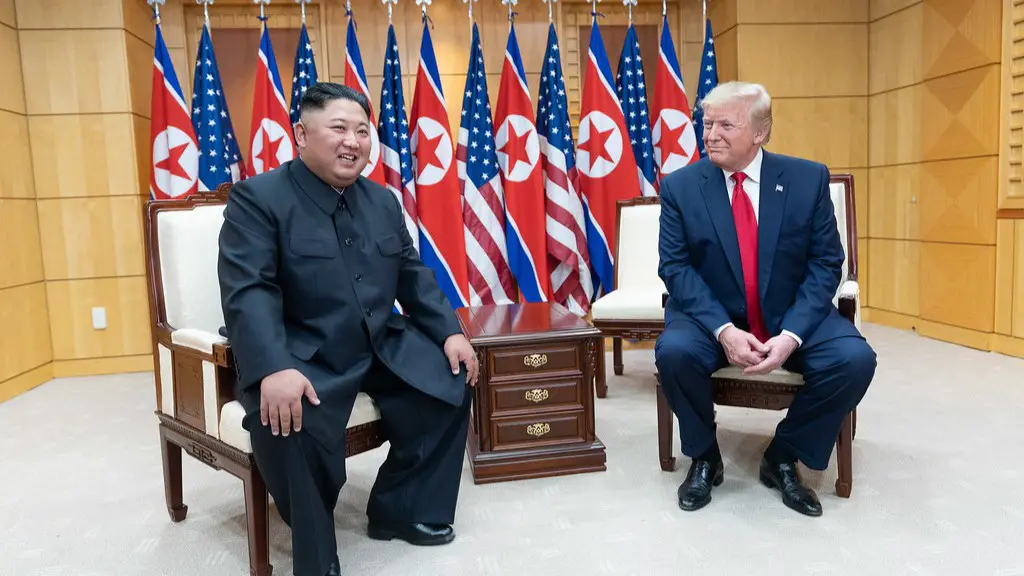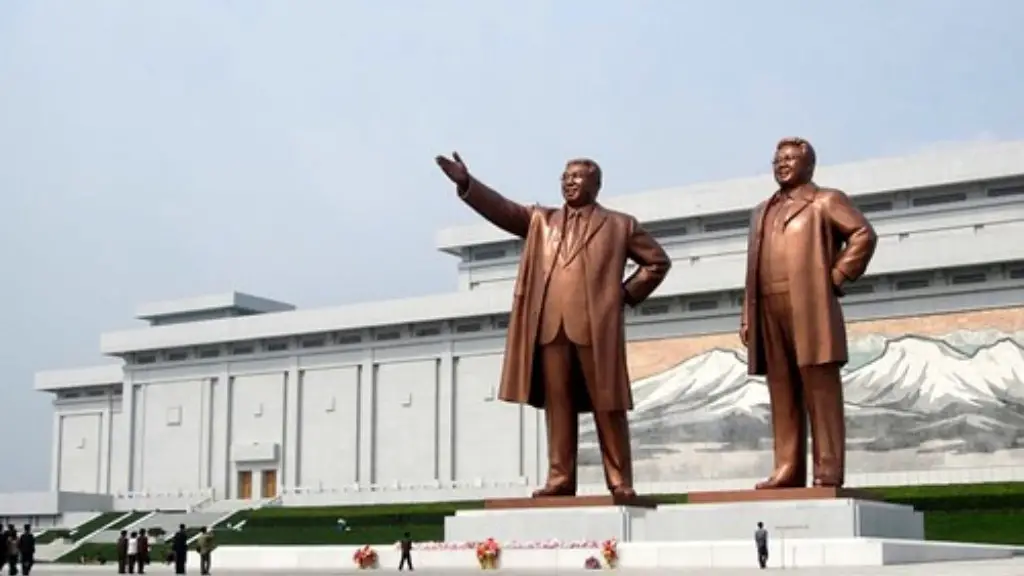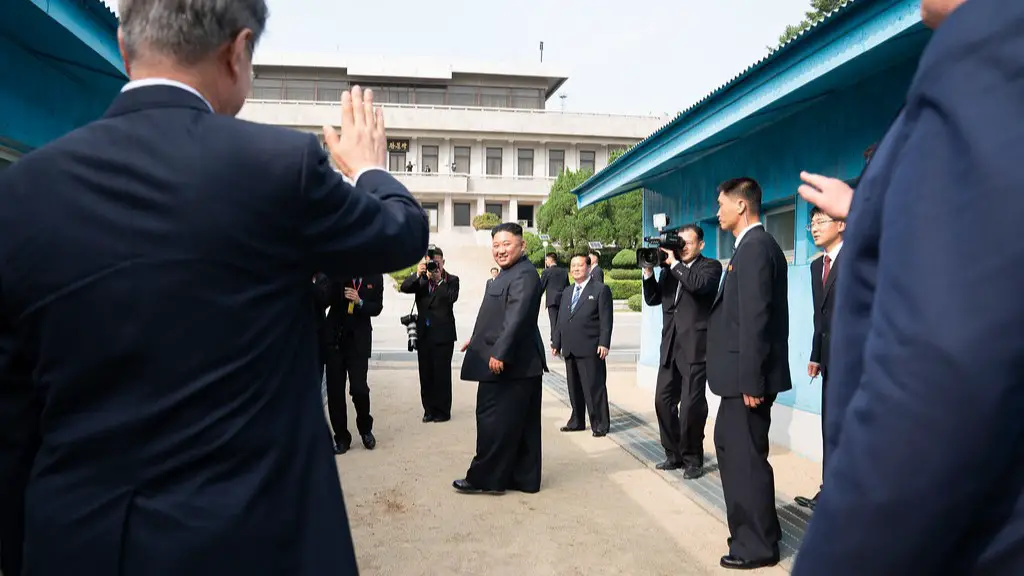North Korea Missile Capabilities
North Korea has possessed nuclear weapons since late 2006. Its missile program has come under increased scrutiny since then due to increased testing and development of more advanced systems. Since the first nuclear test in 2006, the country has been conducting multiple missile tests annually, some of which have had intercontinental range capabilities. It has also developed short and medium-range missiles capable of striking targets within the region, as well as submarine-launched ballistic missiles (SLBMs).
The country has the capability to launch a tailored nuclear or non-nuclear strategic counterattack, which some analysts believe may include submarine-launched nuclear-tipped ballistic missiles called “Polaris-3”. In addition, North Korea has developed and tested intermediate-range ballistic missiles (IRBMs), which have a range far greater than the range of most other missiles in their arsenal, reaching up to 4,000 km (2,500 mi).
North Korea has a sophisticated integrated air defense system, including radar, surface-to-air missiles, and anti-aircraft guns. It also has an extensive network of underground tunnels and hardened shelters to house its nuclear and conventional arms, which could survive a U.S. or allied attack.
North Korea is believed to possess up to 100 nuclear warheads, although its exact number is unknown. It has also acquired enrichment capabilities and plutonium reprocessing technology, as evidenced by its nuclear tests, which have become increasingly sophisticated.
The country has also developed several IRBMs and SLBMs, including the “Taep’o-dong-2”, which is believed to have a range of up to 8,000 km (5,000 mi). In 2017, North Korea conducted its most powerful nuclear test to date, detonating what it described as a thermonuclear device; this test marked the sixth time North Korea had tested a nuclear device.
The threat of North Korean missile strike has been much debated, especially in the United States, where it is perceived as a major threat. Some have argued that North Korea has the capabilities to reach mainland United States with its intercontinental ballistic missiles. However, others claim that North Korea’s outdated missile technology, lack of technological sophistication and inexperience with re-entry technologies make it impossible for them to carry out such a strike.
Perspectives from Experts
In light of the North Korean threat, many leading international security experts have weighed in on the issue.
Watchers of the region contend that North Korea does not yet have the capability to launch a successful missile attack on the United States, as the re-entry technology is far from ideal. One analyst suggests that even if a missile were to be launched, it is unlikely that it would survive re-entry due to the intense heat and radiation that it would be exposed to.
Other experts point out that North Korea has demonstrated a general lack of political sophistication in its military operations and is unlikely to launch an attack against the United States without first engaging in extensive diplomacy.
Despite North Korea’s lack of advanced technology and inexperience, some experts feel the country still poses a threat to the United States due to its development of nuclear weapons. Michael Elleman of the International Institute for Strategic Studies has estimated that North Korea may be able to hit targets in Alaska, Hawaii, and parts of the Pacific Northwest as early as 2018.
Another expert, Bruce Bechtol of the RUSI think tank, notes that North Korea is working on a nuclear device launchable from a submarine and a thermonuclear weapon that could reach the western half of the United States. He also claims that North Korea is proficient in the use of cyber-warfare and attacks on critical infrastructure.
Though experts debate on the capabilities of North Korea, a final conclusion on the threat remains elusive; one thing is for certain, though, the threat of North Korea should not be taken lightly.
Economic Impact and Sanctions
There is no doubt that North Korea’s belligerence has had a huge economic impact on the region, as well as the international community. Since 2006, North Korea has faced 10 rounds of sanctions imposed by the United Nations Security Council (UNSC), which have targeted the regime’s key exports and banking relationships.
The majority of North Korea’s exports are sent to China, an important economic partner for the regime. These exports include mineral resources, such as coal and iron ore, which earn the country hundreds of millions of dollars each year. The United States and its allies have pressured China to suspend its trade with North Korea in order to deprive the regime of its primary source of revenue.
The UNSC sanctions have targeted North Korean financial institutions, as well, in which overseas funds have been funneled through to support the regime’s nuclear and ballistic missile programs. The United States and its allies have frozen North Korean accounts, blocked funds transfers and have sought to crack down on North Korean trade activities.
in response to these economic pressures, North Korea has continued to develop its nuclear and ballistic missile capabilities in an effort to deter further western intervention. The country has used its nuclear and missile programs as bargaining chips to gain economic concessions from the international community.
These economic pressures have had a detrimental effect on the North Korean economy, but the country has been able to maintain its defiant stance against the international community despite the economic sanctions.
Diplomatic Negotiations
Given the threat of North Korea’s nuclear weapons and ballistic missile programs, diplomatic negotiations have become increasingly important in managing the crisis. Since the first nuclear test in 2006, the United States and its allies have sought to engage in direct negotiations with North Korea in order to put an end to its nuclear and missile programs.
In recent years, the United States has pursued a policy of “strategic patience” with North Korea, which involved periods of quiet dialogue with the regime interspersed with periods of heightened tensions. This policy was adopted in order to spur North Korea to engage in direct negotiations with the United States.
In 2018, U.S. President Donald Trump and North Korean leader Kim Jong-Un held their first summit in Singapore, during which the two leaders discussed the prospect of denuclearizing the Korean peninsula. The summit did not lead to any concrete agreements, but it was seen as a major step in reducing tensions between the two countries.
In 2019, A second summit was held in Hanoi, Vietnam, during which there was speculation that the two countries would reach an agreement on denuclearization. Despite optimism surrounding the talks, no agreement was reached and the summit ended abruptly. Subsequent talks have been stalled; the fate of diplomatic negotiations remains uncertain.
Implications for the US
The threat of North Korea’s nuclear and missile capabilities is one of the primary foreign policy challenges facing the United States. The United States has a vested interest in maintaining a secure and stable international order and ensuring that nuclear weapons are not proliferated.
The United States has sought to use diplomatic negotiations and economic sanctions to reach a diplomatic resolution to the North Korean nuclear crisis, but given the lack of progress in negotiations, the future of the US-North Korea relationship remains unpredictable.
The United States has taken measures to bolster its missile defense capabilities in an effort to deter North Korea and protect itself from a potential attack. The US has positioned missile defense systems in Japan, South Korea, Guam and other locations in Asia Pacific to defend against North Korean missiles. Additionally, the United States has been working with its allies to develop mechanisms to intercept and destroy North Korean missiles.
The US has also sought to use cyber-warfare tactics to target North Korean missile capabilities. The US and its allies have worked to disrupt North Korean nuclear and missile facilities by launching cyber-attacks on key military infrastructure.
In the coming months and years, the US will continue to develop strategies to mitigate the threat posed by North Korea’s nuclear and missile capabilities, but until a diplomatic resolution can be reached, the future of the US-North Korea relationship remains uncertain.
International Response
The threat posed by North Korea has prompted international action, as well. Countries around the world have implemented their own sanctions and imposed restrictions on North Korean trade.
The European Union (EU) has taken steps to limit North Korea’s access to global financial systems, as well as its ability to export its goods and services. Additionally, the EU has imposed restrictions on oil shipments to North Korea and has conducted military exercises in the region as a show of solidarity with the United States.
Russia and China, both of which have been traditionally sympathetic to North Korea, have also taken measures to contain the regime. China has suspended some of its economic ties with North Korea and has called for an end to the regime’s nuclear and missile programs. Russia, on the other hand, has sought to de-escalate tensions and has offered to mediate between the United States and North Korea.
The United Nations Security Council (UNSC) has passed multiple resolutions targeting North Korea, which have included economic sanctions and a ban on weapons sales. The UNSC has also taken steps to address human rights abuses in North Korea and to address the humanitarian crisis resulting from the regime’s actions.
Overall, the international community has taken a unified stance against North Korea’s nuclear and ballistic missile programs and will continue to seek diplomatic solutions in order to de-escalate the situation.
Biological and Chemical Weapons
In addition to its nuclear and ballistic missile capabilities, North Korea is believed to possess a robust biological and chemical weapons program and is capable of producing several types of nerve agents, such as sarin, VX and tabun, as well as other agents such as anthrax, bubonic plague and botulism.
North Korea’s biological and chemical weapons program has been of concern to the international community since the early 1990s. The country has conducted numerous tests of its weapons, many of which have been successful. In addition, North Korea is believed to have a large stockpile of these weapons and the capability to deploy them.
In 2017, North Korea conducted its fifth and most powerful nuclear test, which was widely believed to have involved the production of thermonuclear weapons.
Although the international community has largely focused on the threat posed by North Korea’s nuclear and ballistic missile capabilities, the country’s biological and chemical weapons program is also a major source of concern.
North Korea has a demonstrated willingness to use these weapons





